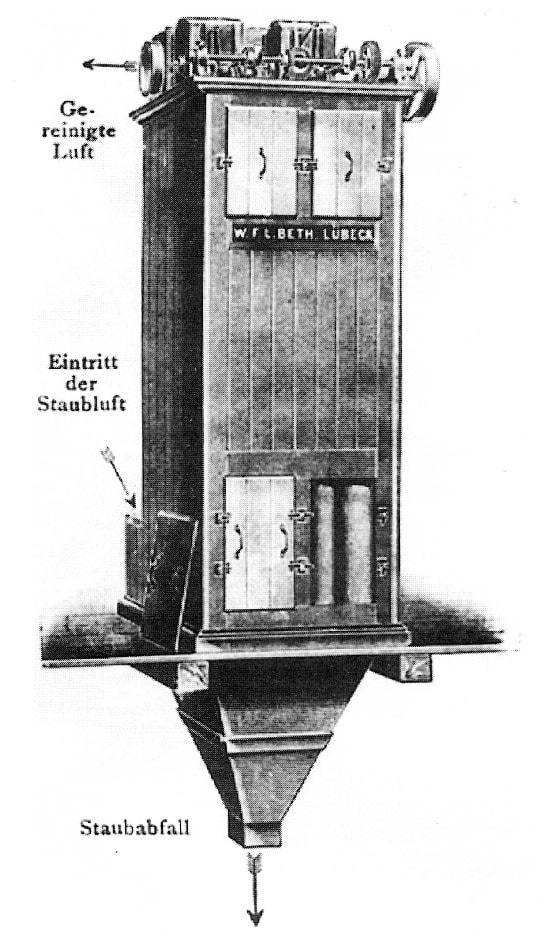Dust collection began during the late 1800s Industrial Revolution in the US, spurred by the rise in manufacturing and the oil industry, which generated increased waste like sawdust, coal dust, and chemicals. This waste polluted the air near factories, leading to health concerns. To tackle this, dust collectors were invented.

The First Dust Collector
The first dust collector is subject to debate, with some attributing it to Wilhelm Beth for his filter-based design, while others credit John Finch for his Cyclone Dust Collector introduced around 1885. Cyclones became popular by 1900 for their effectiveness in collecting coarse dust, and they’re still used today. Operating on centrifugal force, cyclones create a vortex that separates dust from air, depositing it into a collector while letting filtered air out.

The Shaker Dust Collector
In the mid-1920s, a significant advancement in dust collection emerged with the invention of the Shaker Dust Collector by Wilhelm Beth in Germany. Wilhelm introduced a baghouse unit connected to machines via ductwork to collect sawdust and similar materials. The filter elements in this system are self-cleaned using a vibrating motor attached to the frame, which shakes the filter bags to dislodge accumulated dust.

Over time, the design of the Shaker Dust Collector was refined, incorporating better filters capable of capturing smaller particles while maintaining optimal airflow and efficiency. Although still in use today, Shaker Dust Collectors have declined in popularity due to their relatively low air-to-cloth ratio and large footprint, which demands considerable space.
Cartridge Dust Collector
In the early 1970s, the dust collector saw another evolution with the introduction of the cartridge collector. This innovation replaced the fabric in baghouse filters with cartridge media, offering finer filtration. Capable of efficiently filtering particles as small as 0.3 microns, cartridge collectors excel in removing fumes from the air.
New Dust Collection Options
In the mid-1900’s, environmental regulations became more common and major polluters came under pressure to clean up the massive amounts of dust they generated. Shaker bags and basic fabric filters could not handle the task.
Reverse air baghouses were invented around this time, shortly followed by pulse jet baghouses. These provided tremendous improvements in dust collection by setting up an arrangement of filtration bags that could be cleaned by fans or compressed air pulses instead of shaking. These methods kept the bags cleaner and increased the efficiency of the filters.
The invention of baghouses brought a new era in the history of dust collection. Both types of baghouses are still in use today, and they continue to work well. They are especially useful in applications with high temperatures and high humidity. Bags are now made of a wide variety of materials specialized for different needs.
The Future of Dust Collection
As technology continues to evolve, the future of dust collection holds exciting possibilities. Integration with smart devices and cloud-based platforms could enable remote monitoring and control of dust collection systems, empowering operators to manage their systems with unprecedented efficiency and flexibility. Continued research and development efforts may unveil new methods and technologies to further improve dust collection performance, ultimately fostering safer and healthier work environments across various industries.

With ongoing technological advancements, the future holds the promise of even greater strides in optimizing dust collection systems for enhanced workplace safety and environmental stewardship. Here at Baghouse.com we are always researching and implementing the latest cut edge technologies, continuing to make history in dust collection.
Would you like to know how this technology can be applied to your application?
Contact Us to Speak to One of Our Baghouse Experts
For more baghouse related training and information, be sure to check out our Baghouse Online Training page.






